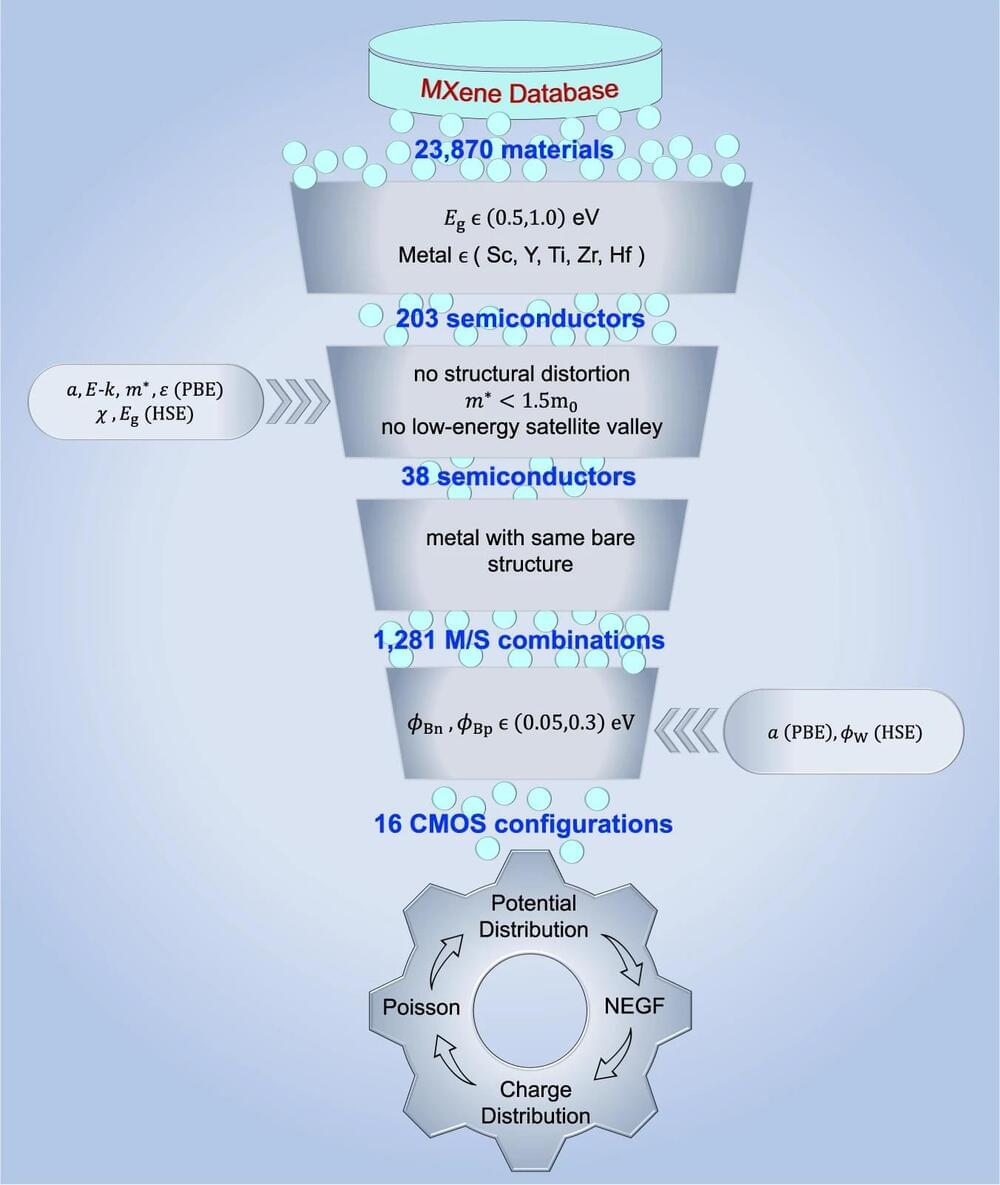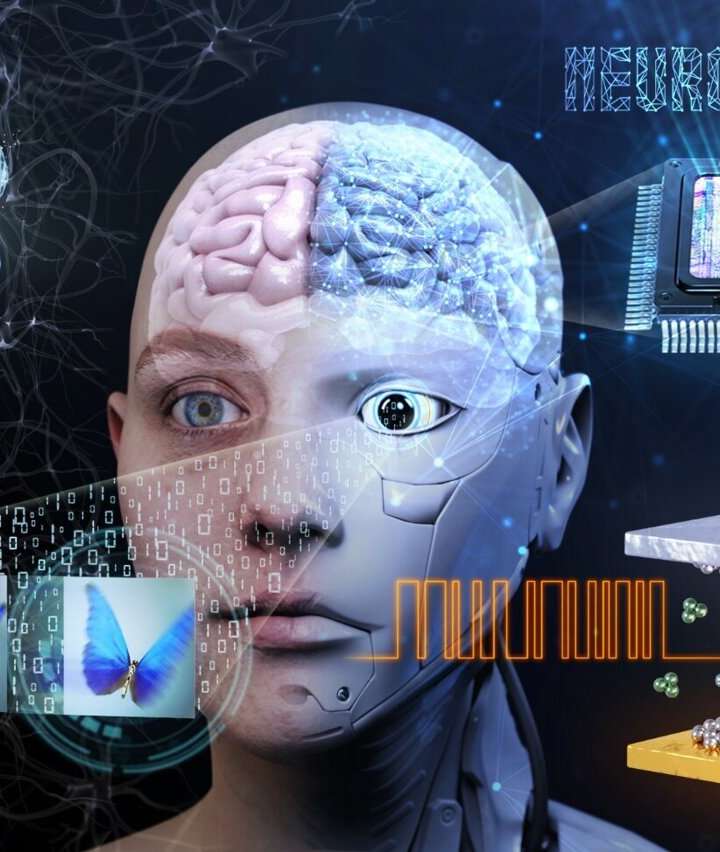An experiment involving a Fibonacci pattern of laser pulses apparently yielded a new state of matter.



Two-dimensional material-based transistors are being extensively investigated for CMOS (complementary metal oxide semiconductor) technology extension; nevertheless, downscaling appears to be challenging owing to high metal-semiconductor contact resistance.
Two-dimensional (2D) nano-materials could be a replacement for conventional CMOS semiconductors for high-speed integrated circuits and very low power usage. CMOS is reaching the physical limits of about 1 nanometer circuits.
Lab performance of these devices has been found to meet the international roadmap for devices and systems (IRDS) requirements for several benchmark metrics.



As reported by The Register, pro-Putin newspaper Kommersant writes that the percentage of defective imported chips into Russia before the war was just 2%, which isn’t very good considering how many components are found in today’s electronic items. Now, almost eight months after the country invaded Ukraine, it stands at 40%.
Tiny single-celled critters obviously don’t have room for a brain to tell them how to move in complex ways, so to get about, they usually roll, slither or swim.
But microscopic pond dwellers called Euplotes eurystomus have mastered a way to walk brainlessly – scurrying about like insects, with their 14 little appendages.
They appear to move a bit like the Dutch-designed kinetic sculptures called Strandbeasts, with clockwork-like connections cycling them through a pattern of set states that can be adjusted in response to their environment.

Physicists are (temporarily) augmenting reality in order to crack the code of quantum systems.
Calculating the collective behavior of a molecule’s electrons is necessary to predict a material’s properties. Such predictions could one day help scientists create novel drugs or create materials with desirable qualities like superconductivity. The issue is that electrons may become ‘quantum mechanically’ entangled with one another, which means they can no longer be treated individually. For any system with more than a few particles, the entangled network of connections becomes outrageously difficult for even the most powerful computers to unravel directly.
Now, quantum physicists from the École Polytechnique Fédérale de Lausanne (EPFL) in Switzerland and the Flatiron Institute’s Center for Computational Quantum Physics (CCQ) in New York City have found a workaround. By adding extra “ghost” electrons in their computations that interact with the system’s actual electrons, they were able to simulate entanglement.
The Linux kernel WiFi stack has five serious flaws, according to research, which a hacker might use to execute arbitrary code or inflict a denial of service.
The vulnerability, identified as CVE-2022–42719, was brought on by a use-after-free issue in the multi-BSSID element’s ieee802 11 parse elems full function of net/mac80211/util.c. A remote authenticated adversary might leverage this issue to execute arbitrary code or bring down the system by sending a carefully crafted request. In v5.2-rc1, the CVE-2022–42719 vulnerability was first made public.
The vulnerability, identified as CVE-2022–42720, was produced about by a use-after-free issue in the multi-BSSID part of the bss ref get function in net/wireless/scan.c. A remote authenticated adversary might leverage this issue to execute arbitrary code or bring down the system by sending a carefully crafted request.

The best examples are simple. This is especially true in quantum computing, where complexity can get out of hand pretty fast. A team of researchers at D-Wave, with collaborators from USC, Tokyo Tech, and Saitama Medical University, recently explored a quantum phase transition — a complex subject by anyone’s standards — in a very simple 1D chain of magnetic spins. Our work, published today in Nature Physics, studies quantum critical dynamics in a coherently annealed Ising chain. Here are a few things we learned along the way.
Programmable quantum phase transitions, as ordered
Phase transitions, such as water to ice, are commonly attributed to changes in temperature. But there is another type of phase transition —-a quantum phase transition (QPT) —-where quantum effects determine the properties of a physical system, in the absence of thermal effects. In a 1D chain, spins at the end of the simulation are either “up” or “down”, and we get “kinks” separating blocks of up spins and down spins (during the simulation, spins can be in a superposition of up and down). The density and spacing of kinks depend on, among other things, the speed and “quantumness” of the experiment. In this work we guided the programmable system of spins through a QPT and investigated the effect of varying parameters such as speed, system size, and temperature.

Scientists have demonstrated a powerful technique that will allow quantum computers to store much more information in photons of light. The team managed to encode eight levels of data into photons and read it back easily, representing an exponential leap over previous systems.
Traditional computers store and process information in binary bits, which can hold a value of zero or one. Quantum computers boost this power drastically with their quantum bits, or qubits, which can hold values of zero, one or both at the same time. But an emerging version of qubits, known as qudits, up the game even more. Rather than just two values like qubits, qudits can theoretically contain dozens of different values, greatly increasing the data processing and storage potential. Better yet, qudits are also more resilient against external noise that can disrupt qubits.
But, of course, there’s a catch: it’s hard to measure and read back data stored on qudits. So for the new study, researchers at Oak Ridge National Laboratory, Purdue University and EPFL have developed a technique to produce and read qudits more reliably. In their experiments, they generated qudits that could each hold up to eight levels of information, and quantum-entangled them in pairs to generate a 64-dimensional quantum space. This, the team says, is four times larger than in previous studies.